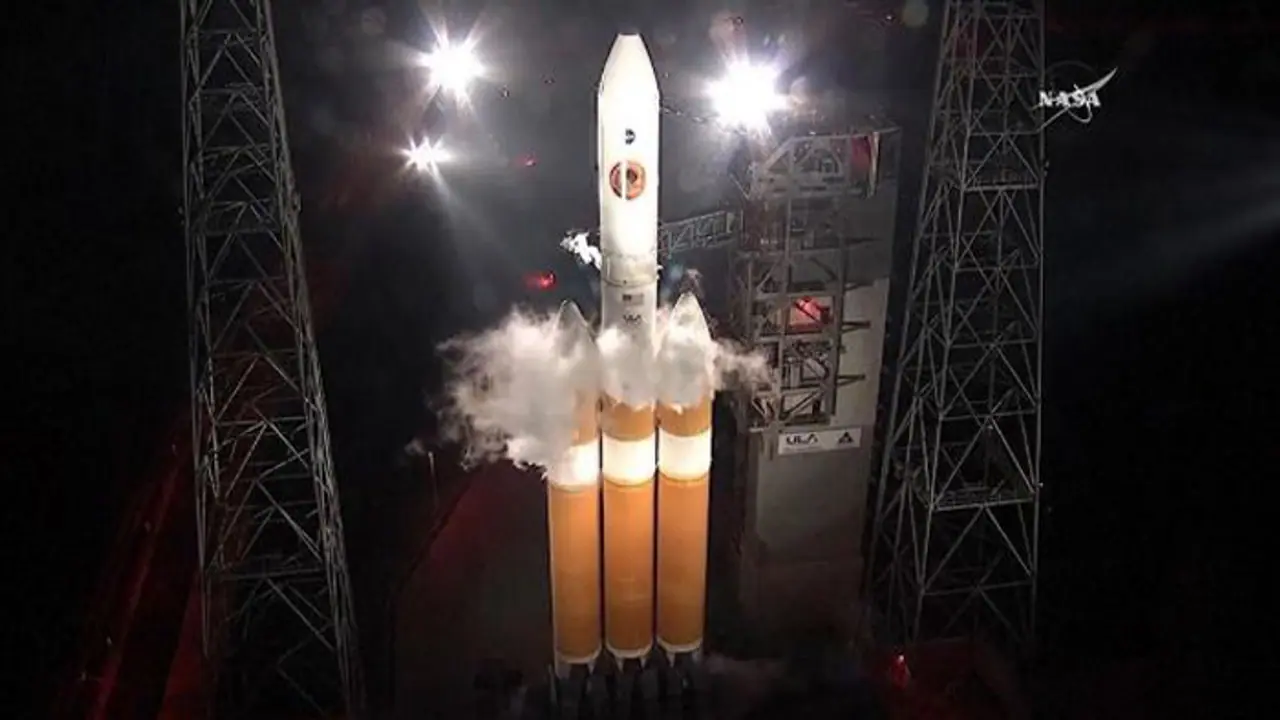"The spacecraft is in good health and operating on its own. Parker Solar Probe has begun its mission to 'touch' the Sun," NASA said in a blog post.
New Delhi: NASA's Parker Solar Probe, mankind's first mission to 'touch' the Sun, was successfully launched today on an unprecedented, seven-year long journey to unlock the mysteries of the star's fiery outer atmosphere and its effects on space weather.
Liftoff of the USD 1.5 billion mission took place from Space Launch Complex 37 at Cape Canaveral Air Force Station in the US at 3:31 am EDT (1:01 pm Indian Standard Time).
"3-2-1... and we have liftoff of Parker #SolarProbe atop @ULAlaunch's #DeltaIV Heavy rocket," the US-based space agency tweeted.
The launch of the United Launch Alliance Delta IV Heavy rocket carrying the spacecraft was scrubbed yesterday due to a violation of a launch limit, resulting in a hold.
"The spacecraft is in good health and operating on its own. Parker Solar Probe has begun its mission to 'touch' the Sun," NASA said in a blog post.
The spacecraft successfully separated from the carrier rocket and deployed its solar arrays shortly after launch.
The mission is the first to be named after a living scientist -- 91-year-old Eugene N Parker, who first predicted the existence of the solar wind in 1958.
The solar wind is a stream of charged particles and magnetic fields that flow continuously from the Sun.
The car-sized probe will travel directly into the Sun's atmosphere, about 3.8 million miles from its surface - and more than seven times closer than any spacecraft has come before, thanks to its innovative Thermal Protection System.
At closest approach, when the probe will hurtle around the Sun at approximately 700,000 kilometres per hour, the front of the solar shield will face temperatures approaching 1,377 degrees Celsius.
The probe will perform the closest-ever observations of a star when it travels through the Sun's outer atmosphere, called the corona. It will make 24 passes through the corona.
In order to unlock the mysteries of the Sun's atmosphere, the probe will use Venus' gravity during seven flybys over nearly seven years to gradually bring its orbit closer to the Sun.
The findings will also make critical contributions to our ability to forecast changes in Earth's space environment that affect life and technology on Earth.
The spacecraft will fly close enough to the Sun to watch the solar wind speed up from subsonic to supersonic, and it will fly though the birthplace of the highest-energy solar particles.
To perform these unprecedented investigations, the spacecraft and instruments will be protected from the Sun's heat by a 4.5-inch-thick carbon-composite shield, which will need to withstand temperatures outside the spacecraft.
The primary science goals for the mission are to trace how energy and heat move through the solar corona and to explore what accelerates the solar wind as well as solar energetic particles.
Scientists have sought these answers for more than 60 years, but the investigation requires sending a probe right through the heat of the corona.
Today, this is finally possible with cutting-edge thermal engineering advances that can protect the mission on its dangerous journey, the space agency said.
A Sun-skimming mission like Parker Solar Probe has been a dream of scientists for decades, but only recently has the required technology - like the heat shield, solar array cooling system, and fault management system - been available to make such a mission a reality, it added.
